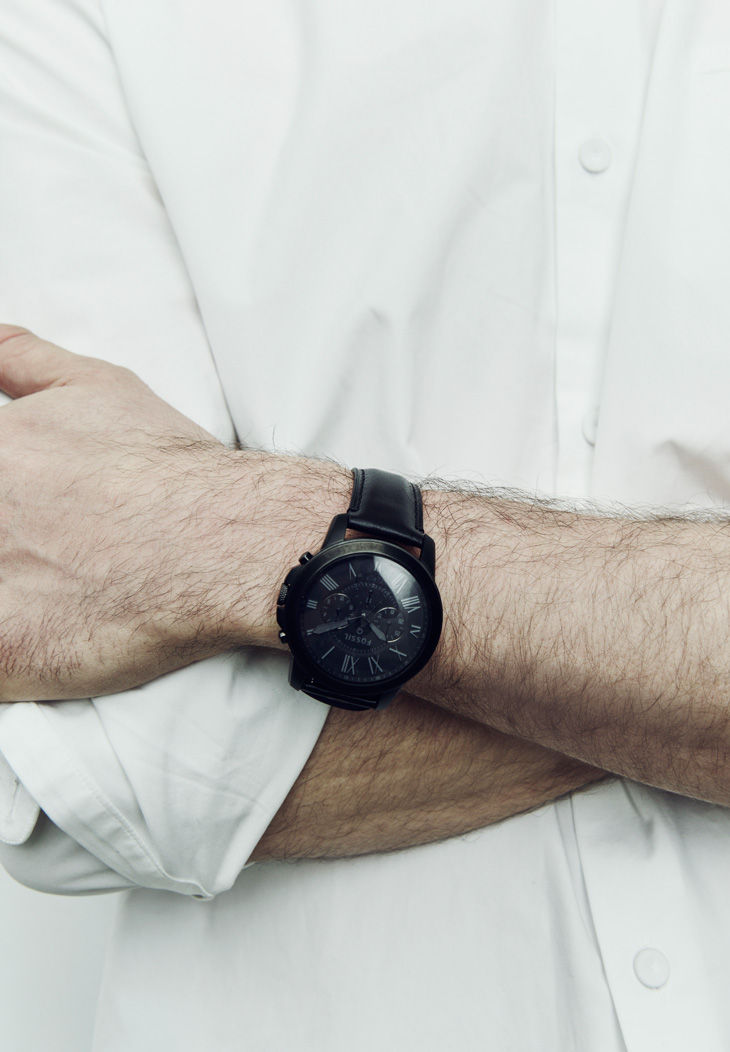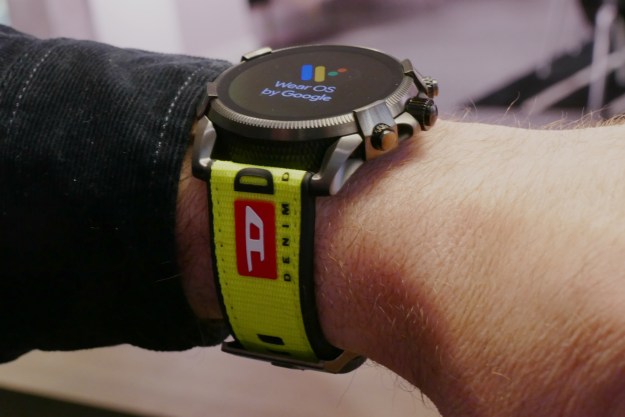Fossil has officially announced a range of wearables under the Fossil Q brand, including two fitness trackers and two smartwatches. Reports of the new connected devices started a few months ago, and Fossil recently teased the products at Baja East and Dion Lee fashion shows in New York, ahead of the launch.
Here are all the different devices in the Fossil Q lineup:
Q Reveler and Q Dreamer
The two fitness trackers, the Q Reveler and Q Dreamer, offer fitness tracking and notifications from your most-used apps. A “subtle nudge” or flash LED will alert you to incoming notifications. The main difference between the two trackers is style: The Q Reveler is for men, while the Q Dreamer is for women.
The Q Dreamer will come with a silver watch face and brown band or a black watch face and black band. You can get leather or silicon straps. The Q Dreamer comes in two colors, silver and gold, and there are eight strap options. Both trackers will be available on October 25 for $125.

Q Grant and Q Founder
The first Fossil smartwatch offers limited connected functionality, similar to the Withings Activité. Named the Q Grant, it is capable of alerting you to incoming notifications with three LEDs, which light up in multiple colors to represent different contacts. The watch can also tracking fitness and activity. The smart wristwatch sports a classic Fossil watch face, which is not customizable. It will be available on October 25 and costs between $175 and $195.
The Q Founder is an actual fully-fledged smartwatch that runs Android Wear. It will offer similar functionality to most Android Wear devices, and supports Android and iOS devices — Windows Phone support was not mentioned in the press release. The smartwatch will be available “this holiday season” for $275.
Fossil confirmed that Intel chips will run inside all four of the devices. The specific chip for each model wasn’t detailed, but we suspect the Q Founder will require more horsepower to keep running throughout the day. Battery life also wasn’t mentioned in the press release.
All four devices will be compatible with Fossil’s mobile app, which includes Q Activity, a fitness tracker that connects with Google Fit, Health UP by Jawbone, and UA Record by Under Armour. Users will be able to choose which notifications matter on the app, as well, and can tailor the LEDs to represent a specific person or notification type.
We’ll keep you updated on the three devices here, as we learn more.
Next page: All the rumors leading up to the launch
In late September, American watchmaker Fossil teased its first smartwatch at the Baja East and Dion Lee fashion shows in New York. Fossil followed up with a blog update, revealing some of the compatibility options and software features coming to the Fossil Q.
It seems that Fossil will introduce a range of smartwatches, including one that is very basic. It’s unclear which operating system the basic version will run, but at least one other watch should run Android Wear, based on what we saw earlier this year.
Apparently, the display on the Fossil Q will not be changeable or touchable, making the Fossil Q a rather timid first entry into the smartwatch market. To make the watch smart, Fossil will have a companion app and activity tracking features. Users will be able to connect to the sensors inside the Fossil Q through a smartphone to track daily movement, manage notifications, and “join a community of curious minded individuals.” The Fossil Q pairs with Android, iOS, and Windows phones; so no operating system is left out in the cold (except BlackBerry).
Design wise, the Fossil Q will come in a metallic black or silver shell. Bands are available for both men and women, so each customer can pick the right size. Fossil still wants its watch to be loved for the design and quality, not just the smart software features. The tracking is very basic, though it will serve most people’s needs. With this version of the Q, Fossil focused on its own customers who want more “smart” functionality on their normal watch, rather than geeks who want a nicer looking smartwatch with all the bells and whistles. Of course, more high-tech Fossil watches could follow.
As we found out at the Intel Developer Conference, where the Fossil Q was first announced, the wearable will use an Intel chip. Since the Fossil Q will not use an LCD display, it could last more than 30 days without any charge necessary, especially with the advances on battery saving by Intel.
If the Fossil Q strikes your fancy, it will be available in stores and online this holiday season. Fossil hasn’t given us a firm launch date, but we suspect it will arrive any time before the first week of December.
Fossil is the latest in a growing line of traditional watchmakers that are adding smart features to their timepieces. TAG Heuer announced a partnership with Google and Intel to build a smartwatch earlier this year, but we have yet to see the fruits of this partnership. We’ll keep you updated on the Fossil watch here.
Editors' Recommendations
- Apple finally makes it harder to stalk Android users with its new Tracker Detect app
- The best Wear OS apps for your Google-powered smartwatch
- Upcoming Fossil Gen 6 swartwatch won’t run Wear OS 3 until 2022
- The Fossil Gen 5’s custom WearOS enhancements stand out from the crowd
- Tag Heuer reimagines its beautiful, $1,800 WearOS smartwatch for 2020





